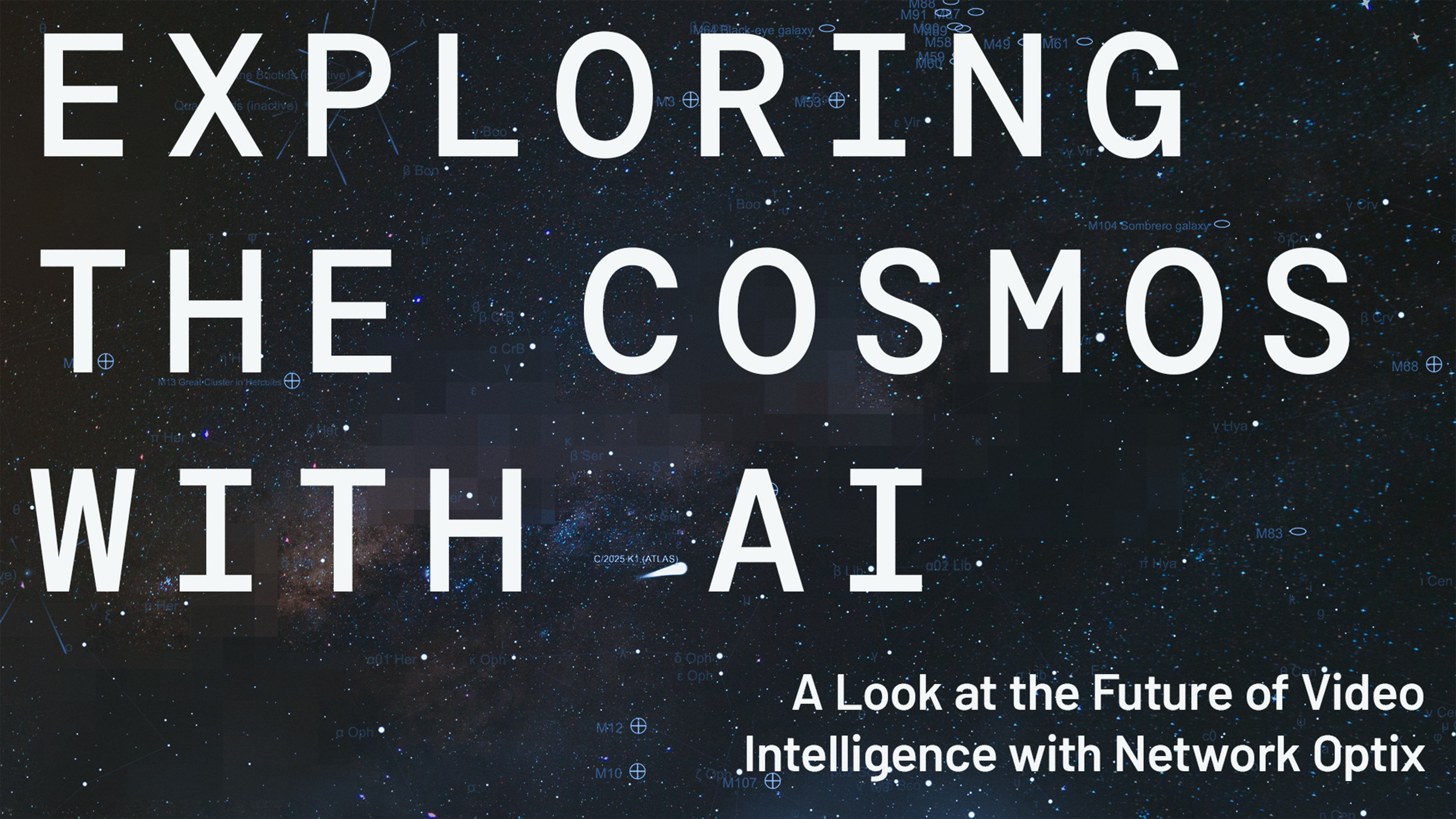Each month, we explore a new potential application of video intelligence (VI) that could be built on the Nx EVOS platform. This month, we’re turning our attention to the stars and discussing how AI-powered video systems could help astronomers, researchers, and institutions track meteors, monitor stars, and explore planetary behavior in ways that are faster, smarter, and more scalable.
Automating Celestial Surveillance
Space is a crowded place, despite what its name might entail. Earth's atmosphere is constantly being bombarded by meteoroids while thousands of stars and planets drift across our sky every night. Traditionally, the task of tracking these events fell to scientists who had to manually review telescope footage, a process that was both time-consuming and highly dependent on clear skies, perfect timing, and resources.
But AI Video is already changing this. All across the globe, modern observatories and scientific institutions are experimenting with video intelligence to watch the skies more carefully. Just look at NASA's CAMS project, for example; they've already begun to deploy a worldwide network of low-light cameras that can detect and triangulate meteor trajectories. These systems use deep learning to identify meteors and calculate their orbits in real time, turning hours of manual review into an automated system. Similarly, the Global Meteor Network processes over a million meteor observations annually through a distributed array of Raspberry Pi-powered video stations. And in France, the FRIPON network combines over 150 all-sky cameras with radar systems to detect fireballs and track meteorites to their landing zones.
These systems aren’t science fiction; they’re operational today, using off-the-shelf cameras and intelligent software to perform what used to be astronomically slow work. And these projects aren't limited to NASA. As seen through the GMN (powered by Raspberry Pis and dedicated astronomers), anyone could create a similar solution using a platform like Nx EVOS.
Mapping The Cosmos With AI
While space detection gets more attention the closer we are to home, the potential for broader video intelligence applications is more vast than space itself. With the sheer number of observable stars, exoplanets, and other interstellar objects, astronomers are turning to computer vision to help process and map the sheer volume of data collected by modern observatories.
Projects such as Morpheus, used by the James Webb Space Telescope, are already doing just that. With this Machine Learning framework, scientists are using deep learning to classify stars and galaxies at a massive scale, automatically identifying light curves, transits, and other interstellar anomalies that could point to entirely new planetary bodies or previously undiscovered celestial behaviors. This kind of analysis doesn't rely solely on images either; it can be applied to time-lapse video sequences where even the slightest change in brightness, or one small pixel of a shining star, could lead to the discovery of a second Earth.
NASA wouldn't have to work alone on this. Imagine a worldwide series of observatories using video intelligence systems built on Nx EVOS tracking a field of stars over time. The AI models deployed through Nx AI Manager could be trained to detect periodic dimming or unexpected changes in light intensity, showing early signs of exoplanet activity or the birth and death of stars across the universe. Rather than personally combing through hours of raw footage, researchers could gather real-time alerts for these small on-paper, larger-than-life events and continue to explore the stars from the safety of Earth. This is far more than automation; it could very well accelerate the rate at which mankind maps the stars for generations to come.
The Sky's No Longer The Limit
Through these examples alone, it's clear that this is a real field of development, and using a platform like Nx EVOS could allow developers to join in on the next space race. With its support for AI integration, hybrid development, and open-ended architecture, a solution built on Nx EVOS could serve as the backbone for distributed observatories to study the stars more thoroughly.
As our understanding of the universe grows, so does the need to collect, monitor, and process the endless amounts of data that come with that understanding. From tracking near-earth meteors to changes in far-away galaxies, the future of astronomy will depend not just on bigger telescopes, but smarter software.


